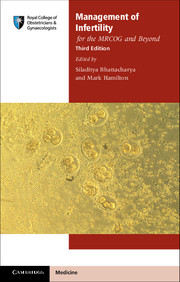Book contents
- Frontmatter
- Contents
- About the authors
- Preface
- Acknowledgements
- Abbreviations
- 1 Epidemiology and initial assessment
- 2 Male factor infertility
- 3 Ovulatory disorders
- 4 Tubal infertility
- 5 Endometriosis-related infertility
- 6 Uterine factors in infertility
- 7 Unexplained infertility
- 8 Assisted reproduction – preparation and work-up of couples
- 9 Assisted reproduction – clinical and laboratory procedures
- Index
9 - Assisted reproduction – clinical and laboratory procedures
Published online by Cambridge University Press: 05 June 2014
- Frontmatter
- Contents
- About the authors
- Preface
- Acknowledgements
- Abbreviations
- 1 Epidemiology and initial assessment
- 2 Male factor infertility
- 3 Ovulatory disorders
- 4 Tubal infertility
- 5 Endometriosis-related infertility
- 6 Uterine factors in infertility
- 7 Unexplained infertility
- 8 Assisted reproduction – preparation and work-up of couples
- 9 Assisted reproduction – clinical and laboratory procedures
- Index
Summary
Keywords
- Type
- Chapter
- Information
- Management of Infertility for the MRCOG and Beyond , pp. 97 - 112Publisher: Cambridge University PressPrint publication year: 2014

